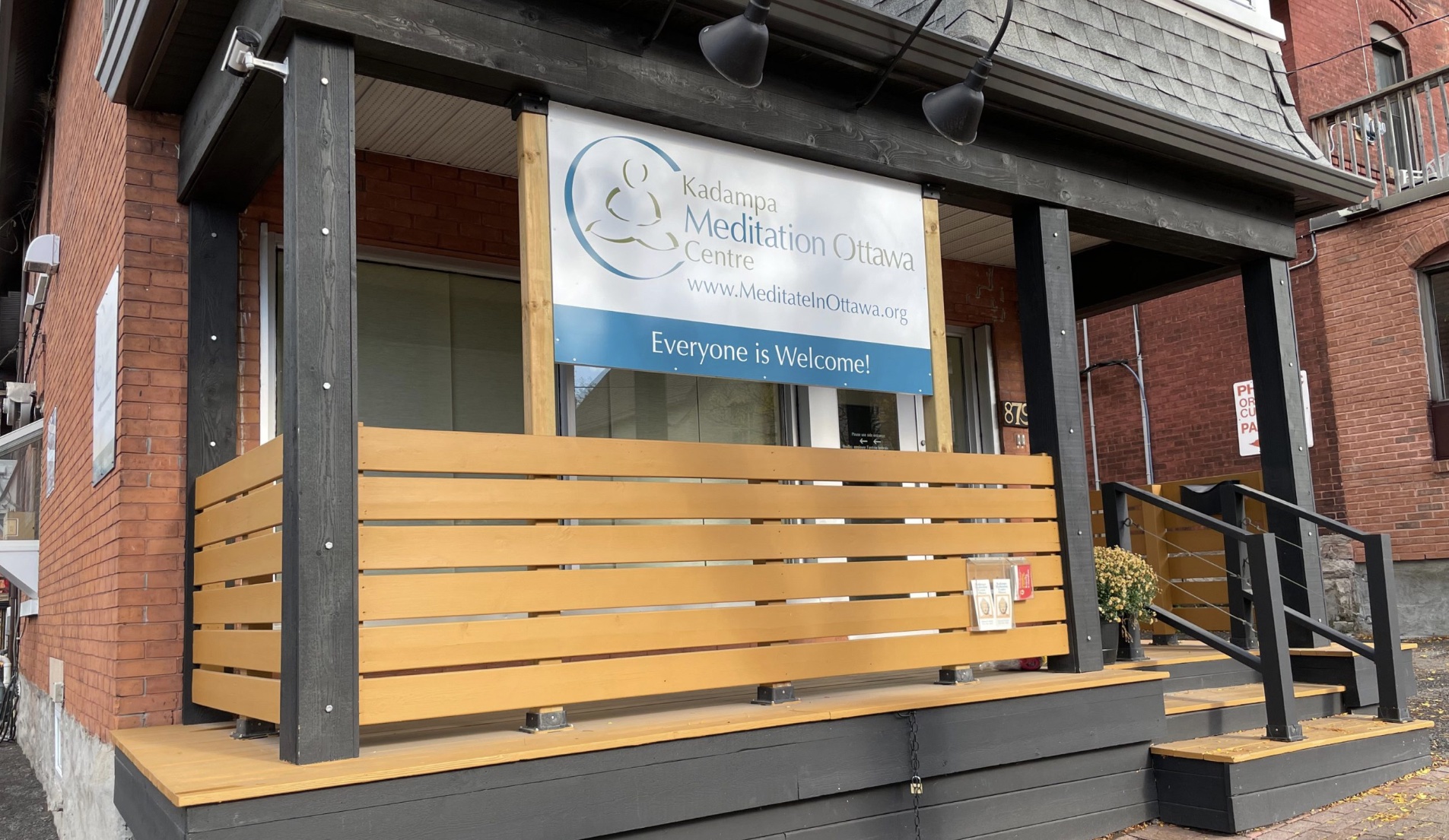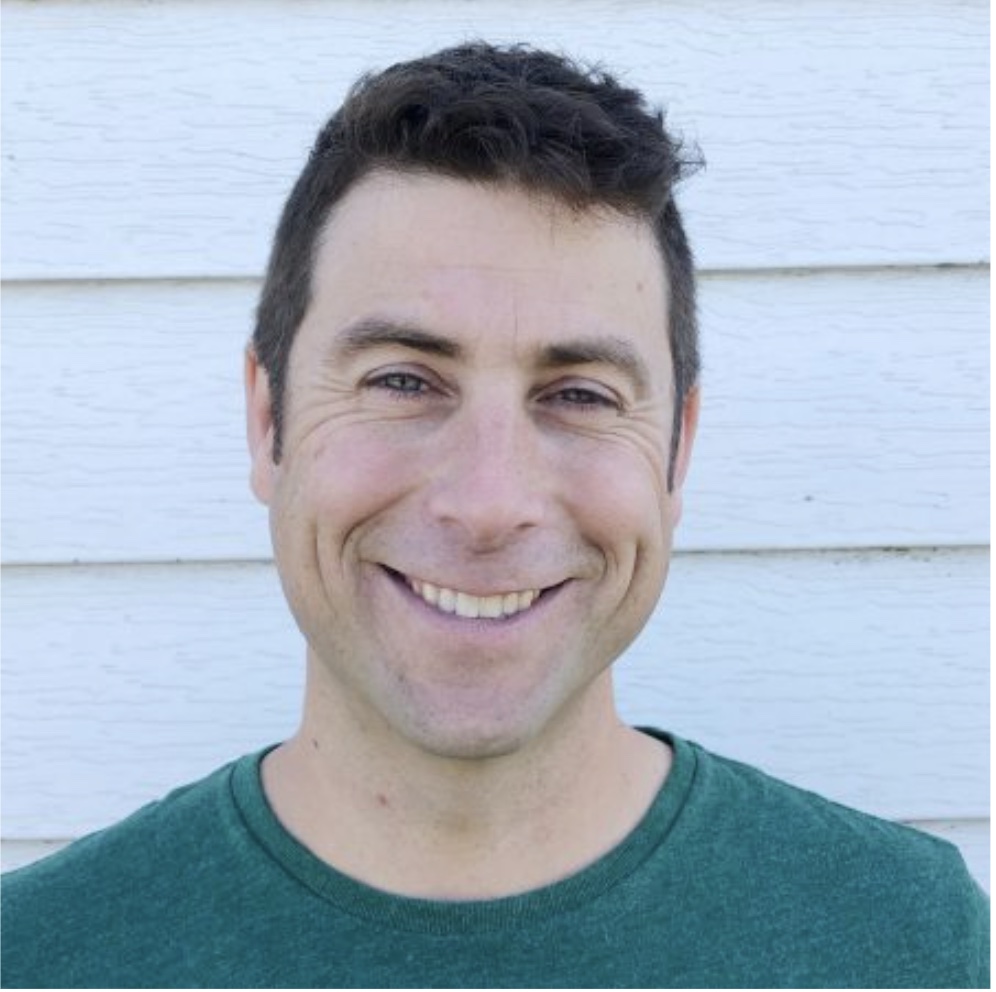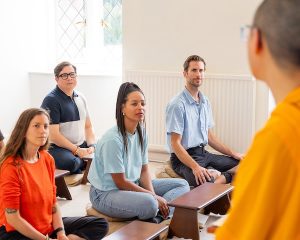Dealing with the death of my mother
Steve Grover
grief had stolen my life
I first stepped into a Kadampa centre shortly after losing my mom to cancer. I was angry and intensely sad. If I was alone with my thoughts for more than a few minutes, there was a good chance I'd be in tears. So I tried to fill my time to distract myself from my pervasively crabby mood. This took the form of work and exercise during the day for stimulation followed by maybe a drink and a joint for relaxing in front of the TV in the evening. These strategies would work for a while; until they didn't. The sadness and anger would always return. I needed something to change.
Finding a meaningful connection
I had seen the Kadampa centre, with it's statues visible from the street. Walking by one day, I took a flyer listing the upcoming events. I wasn't Buddhist, so I was hesitant to step inside. The ‘Everyone Welcome' sign felt inviting though, so I popped into a class, completely unsure what to expect. I'm glad I did.
The teacher spoke about real, modern life and shared Buddhist approaches to dealing with our difficult lives. Everything was completely relatable – real people facing real problems. And the perspectives and strategies that the teacher shared for how to deal with these problems, completely made sense. Not in some mystical, complicated-philosophy way. Rather, it was more of an approach like ‘how should we face the difficulties of modern life and not become stressed, anxious, worried or depressed by them? How do we stay happy and peaceful when the world around us is falling apart?’

Learning to accept the inevitable
I began to understand that the pain I was feeling wasn't coming because of my mom's death. The pain was coming from not accepting the reality that her death was a natural outcome, and that it wasn't to punish me – or any of her loved ones. It's just what happens. By focussing so tightly on how her passing affected me personally, and my wish for her to remain, I was stuck in a painful situation, creating my own teary breakdowns. Buddhist perspectives of patient acceptance, attachment, impermanence, and the power of our own mind to create our suffering or happiness, really motivated me to create a happier situation.
Finding a clear and simple approach to healing
I always felt better after listening to a teaching and meditating at the centre. And I was encouraged to think that I could also set up a meditation practice on my own, at home. I picked up a copy of The New Meditation Handbook, gave it a read, and tried to practise meditation on my own. I was struck initially by the simple instructions and clarity of these meditations. That's not to say that it's easy to keep the distractions from getting in the way of my concentration - that's very much a work in progress. But the wisdom of the meditations, as well as the directions – the how-to of meditation – that all is really quite clear and understandable. Read New Meditation Handbook

Inner calm is a reality
Best of all though, I've found that these meditations work. As a direct result, I'm happier. Those negative, painful ways of thinking and feeling are making way for calmer, clearer patterns. So now, when other difficult situations come (work, relationships, family, finances… you know, modern life) they're much easier to navigate. It turns out, we can learn helpful habits, like meditation, and that we can strengthen the habit of inner calm - even in the face of all our modern problems.
Steve Grover
Steve attends Kadampa Meditation Centre Ottawa
Find a Kadampa Center near you.




